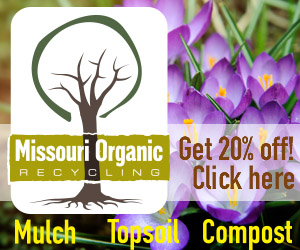By Katie Pohlman
That waste you flush down the toilet might just be on its way to help fertilize farmland owned by Kansas City Water Services.
But don’t worry; they aren’t applying raw sewage to crops. The Birmingham Land Application Facility, located on the north side of the Missouri River near the Ameristar Casino, processes waste to fertilize the 1,350 acres of city-owned land. Kansas City Water Services grows corn and soybeans on the farm that are then used to create alternative fuel sources and high-fructose corn syrup, said Tim Walters, Kansas City’s chief agronomist.
Corn and soybeans were the crops of choice because corn takes up a lot of nitrogen — which is abundant in human-waste fertilizer — and because those are two of the simplest crops to grow, Walters said. Plus, the farm couldn’t grow any other food crops due to health concerns.
“We can’t grow any root crops or anything that can be directly consumed,” he said.

The fertilizer is sprayed before planting every spring.
The city first bought the land that is now home to Birmingham Farm in the mid 1970s. It was originally used as a stand-alone treatment plant, and there are still lagoons on the property. The department slowly bought up more land and built sub-surface irrigation systems around the farm. Two pipelines were also built under the river to connect Birmingham Farm to the Blue River Wastewater Treatment Plant (WWTP), where Kansas City’s human waste is processed.
Preparing the waste
Before the waste is applied to the land, it must undergo an intense treatment process.
Waste that is flushed down the toilet is sent to one of Kansas City’s six wastewater treatment facilities to be separated into solids and liquids. The solids are then moved to Blue River WWTP, where the solids undergo a mesophilic anaerobic digestion process. In this process, air is removed from the waste so that anaerobic bacteria can thrive and break down organic material, according to the U.S. Environmental Protection Agency. Methane and hydrogen sulfide are two of the main by-products.
After the solids are removed in the treatment process chlorine is added to clean the water that will be released into the Missouri River. Sodium Bicarbonate is also added to deactivate the chlorine once cleaning is completed.
The processed waste (Class B biosolids) is then piped to lagoons at Birmingham Farm for further treatment, Walters said.
At Birmingham Farm, chlorine is added to clean the water that will be released into the Missouri River. Sulfate is added to deactivate the chlorine once cleaning is completed.
By using human waste as fertilizer, Kansas City has decreased operations of the incinerator at Blue River WWTP, saving the city $240,000 from reduced operations in 2012.
Efficient use of waste
When Walters started working at the farm in 2000, his first project was to clean out the lagoons and revamp the sub-surface injecting system. Eventually he switched over to above-the-surface applications — the fertilizer is now sprayed out through a hose every spring before planting time.
Annually, 5,500 dry tons of waste are sent to Birmingham Farm to be used as fertilizer. Nearly all of that is used, but the waste that isn’t is either sent to Blue River’s incinerator or to a landfill.
Walters said he used the lagoons so efficiently the wastewater treatment plant couldn’t keep up.
Story continues on next page…






Well-written and very informative article! I’ve never thought that the process took so long and the very beginning is my toilet, huh. At the end all that matter is to efficiently use all the waste in order to reduce our footprint.